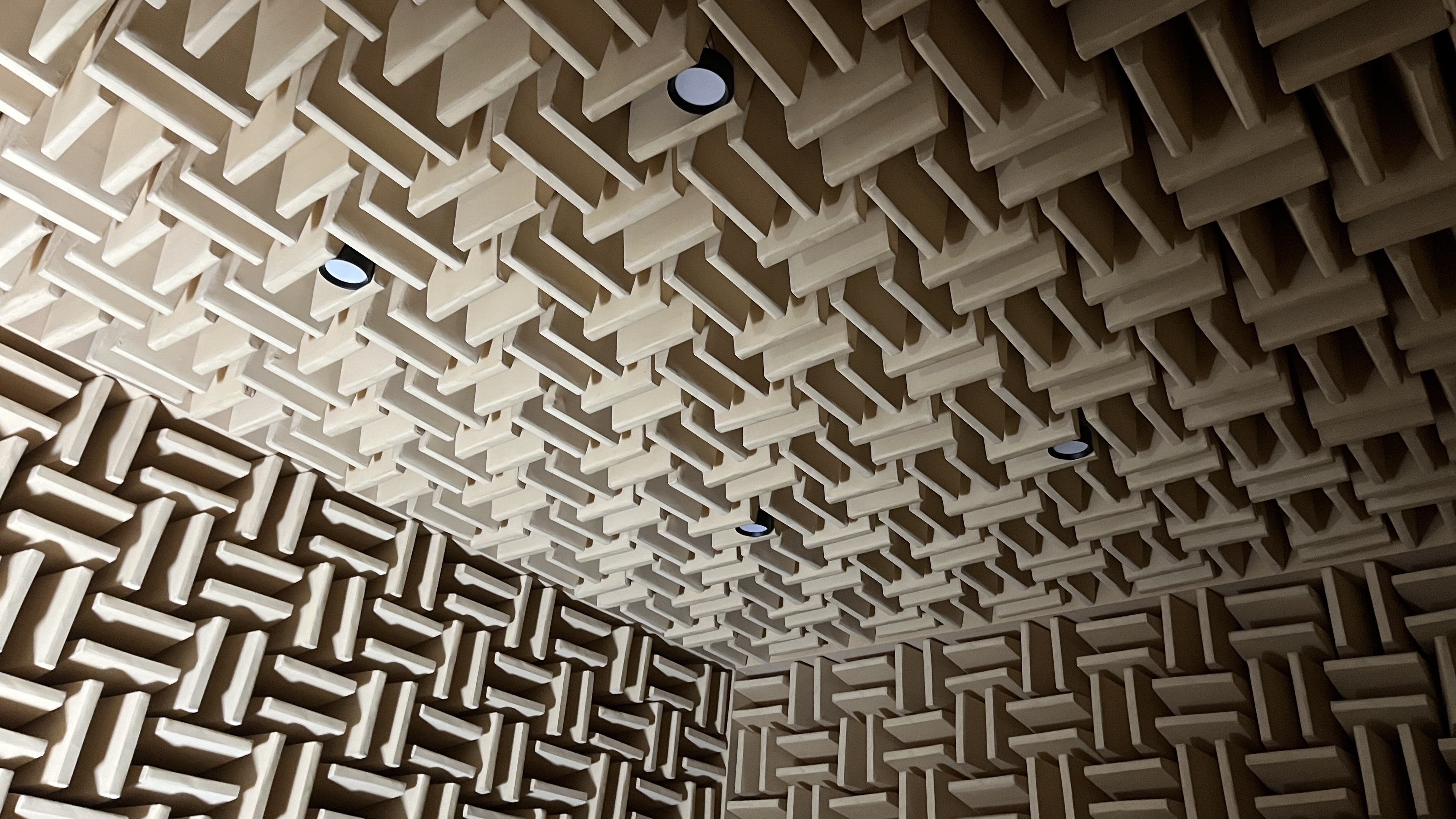Fully anechoic chambers and semi-anechoic chambers are important facilities for reducing environmental noise, and they play an important role in different occasions. There are some differences in design and functionality between fully anechoic chambers and semi-anechoic chambers, one important difference being their background noise numbers.
Due to construction differences, the background noise requirements of a fully anechoic chamber are lower. Generally, we install acoustic wedges on 6 sides to meet the requirements of acoustic testing. Semi-anechoic rooms generally do not have sound-absorbing treatment on the floor and do not install acoustic wedges. They are just ordinary floors. Therefore, the cost of a fully anechoic chamber is higher than that of a semi-anechoic chamber, and the background noise is lower.
A fully anechoic room is a room designed to completely isolate external noise. Special materials and structures are usually used to achieve extremely high sound insulation and sound absorption effects. The background noise of a fully anechoic chamber is very low, usually at an extremely low decibel level, and can provide an extremely quiet environment. It is suitable for laboratories, recording studios and other occasions that require extremely high quietness.
In contrast, semi-anechoic chambers are designed to reduce interference from outside noise but do not completely isolate it from outside sound. Semi-anechoic rooms usually use sound-absorbing materials and sound-insulating structures. The background noise level is slightly higher than that of fully anechoic rooms, but they can still provide a relatively quiet working environment and are suitable for general offices, research laboratories and other occasions.
In practical applications, the background noise levels of fully anechoic chambers and semi-anechoic chambers will differ. The background noise of fully anechoic chambers is usually below 20 dB, while the background noise of semi-anechoic chambers may be between 20 and 40 dB. The specific gap depends on the respective design and material selection. Generally, the lower the background noise value is required, most will use a fully anechoic chamber.
There is a certain difference in the background noise value between a fully anechoic chamber and a semi-anechoic chamber. A fully anechoic chamber provides a quieter environment and is suitable for occasions with extremely high noise requirements, while a semi-anechoic chamber provides a relatively quiet environment. Working environment, suitable for general office and research places. Choosing appropriate sound attenuation facilities can effectively improve work efficiency and comfort, and ensure the smooth progress of work and research.

